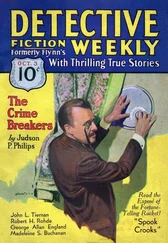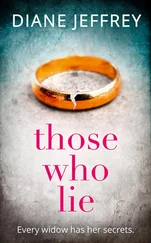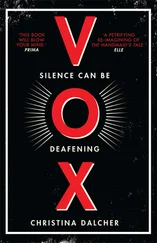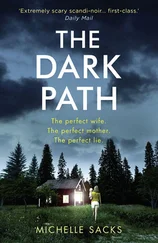None of these women, of course, would have described herself as a social historian or as having a prime responsibility either to portray contemporary mores or to criticise the age in which she worked, and it is perhaps this detachment of purpose which makes these writers so reliable as historians of their age. They were of their time and wrote for their time and their stories give a clear and, indeed, a personal account of what it was like to live and work as an educated woman in the decades between the wars.
The 1914-18 war had, of course, very greatly advanced the cause of women’s emancipation. They gained the vote and already had the right to a university education but not to a degree until 1920, when in October of that year Dorothy L. Sayers was one of the first women to receive an Oxford degree. The professions were now open to them, but their lives were still extraordinarily restricted compared with today. The mass slaughter of young men in the Great War had meant that there were three million so-called surplus women and very few opportunities open to them, since married men were given priority for jobs. Dorothy L. Sayers deals with this most tellingly, particularly in her treatment of Miss Climpson and her Cattery, a small group of spinsters employed by Lord Peter to assist his detective work. He explains their function to Inspector Parker in Unnatural Death .
Miss Climpson is a manifestation of the wasteful way in which this country is run. Thousands of old maids, simply bursting with useful energy, forced by our stupid social system into hydros and hotels and communities and hostels and posts as companions, where their magnificent gossip-powers and units of inquisitiveness are allowed to dissipate themselves, or even become harmful to the community, while the ratepayer’s money is spent on getting work for which these women are providentially fitted, inefficiently carried out by ill-equipped policemen like you.
Dorothy L. Sayers, among much in her books that is tendentious or over-romanticised, does deal realistically with the problem of the so-called superfluous women deprived of the hope of marriage by the slaughter of the 1914-18 war, women with intelligence, initiative and often with education, for whom society offered no real intellectual outlet. And those who did find intellectual satisfaction commonly achieved it at the sacrifice of emotional and sexual fulfilment. It is interesting and, I think, significant that there is no married don in Gaudy Night and only one married woman-and she a widow-Mrs. Goodwin, who is a member of the senior common room. Women in the Civil Service and teaching were required to resign on marriage, the supposition obviously being that now they had a man to support them they should direct their energies to the proper sphere of interest for their sex. I cannot think of a single detective story written by a woman in the 1930s which features a woman lawyer, a woman surgeon, a woman politician, or indeed a woman in any real position of political or economic power.
One notable exception to the way in which women were perceived as wives, mothers, useful little helpmeets such as stenographers and secretaries, is Margery Allingham’s Lady Amanda Fit-ton. Another Allingham heroine who has a professional job is Val Ferris, Albert Campion’s sister, who has been unhappily married but now works singlemindedly to establish herself as a leading dress designer. She and the actress Georgia are in love with the same man, and the book The Fashion in Shrouds explores the emotional pressures on women who dedicate themselves to a career but also want fulfilment in their emotional lives, a problem which is also one of the themes of Dorothy L. Sayers’s Gaudy Night . Val and Georgia are described in the novel as “two fine ladies of the modern world,” but both are aware of their inner dissatisfaction as they drive home alone to their bijoux, hard-earned houses. The novelist says: “Their several responsibilities are far heavier than most men’s and their abilities greater,” but their femininity-“femininity unprotected from itself”-is presented as “a weakness, not a strength.” And when Alan, Val’s future husband, proposes to her, he sets out his terms unambiguously. He wants to take “full responsibility” for Val, including financial responsibility, and expects in turn that she will yield to him “your independence, the enthusiasm which you give your career, your time and your thought.” She does this almost with a sigh of relief. It is very difficult to imagine a modern writer of detective stories, particularly a woman, thinking that this is a satisfactory solution to Val’s dilemma. It is even more difficult to imagine a modern female reader tolerating such blatant misogyny.
Ngaio Marsh is also of her age in the ingenuity of her methods of murder, and surprisingly ruthless and robust in her despatch of victims. In Died in the Wool , set in a sheep station, Florence Rubrick is stunned and then suffocated in a bale of wool. The victim in Off with His Head is decapitated. In Scales of Justice , Colonel Carterette, after being struck on the temple, is killed by the point of a shooting-stick which the killer actually sits on to push it home. She knew too the importance to a novel of the heart-stopping moment when the body is discovered. In Clutch of Constables we share Troy ’s horror as she looks down at the body of Hazel Rickerby-Carrick bobbing and bumping against the starboard side of the river steamer, “idiotically bloated, her mouth drawn into an outlandish rictus grinning through discoloured foam.” Death is never glamorised nor trivialised by Ngaio Marsh.
If Ngaio Marsh worked largely within the conventions of the detective novel of her age, in which way did she transcend these conventions, and transcend them so successfully that her novels are still read with pleasure while so many of her contemporaries are only named in the reference books of crime? Firstly I suggest it lay in her power of characterisation, not only in the sensitive and attractive portrayal of Alleyn and his wife, Troy, but in the rich variety of characters who people her thirty-two novels. Her eccentrics are never caricatures. I remember particularly the president, The Boomer, in Black as He’s Painted , poor deluded Florence Rubrick in Died in the Wool , Nurse Kettle in Scales of Justice , the distinctive Maori Rua Te Kahu in Colour Scheme , the Lamprey family depicted in A Surfeit of Lampreys with love but with insight and honesty. It is because in a Ngaio Marsh novel we can believe in the people and enter for our comfort and entertainment into a real world inhabited by credible human beings, so that some critics, including Julian Symons, have deplored her need to introduce murder, a view which occasionally she appeared to share. She wrote of her characters:
I wish I could set them up in an orderly, well-planned fashion, as I’m sure my brothers and sisters-in-crime do. But no. However much I try to discipline myself as to plot and general whodunnitry I always find myself writing about a set of people in a milieu that for one reason or another attracts me, and then, bad cess to it, I have to involve them in some crime or other. Does this mean one is a straight novelist manquée?
It is indeed the set of people in a milieu which so powerfully attracts us as readers. Perhaps the most valid criticism of Ngaio Marsh is that she was too concerned with the details of the “whodunnitry.” The novels have great vitality and originality while the scene is being set and the characters assembled, but tend to sag in the middle, borne down by the weight of police interrogation and routine investigation. The distinction she drew between a novel and a detective story is, of course, one which finds little favour with crime writers today; we feel entitled to be judged as novelists, not as mere fabricators of mystery. But it was a distinction reaching back to the Victorians and was a view shared by other crime writers of her time, including, somewhat surprisingly, Dorothy L. Sayers at the start of her career.
Читать дальше












